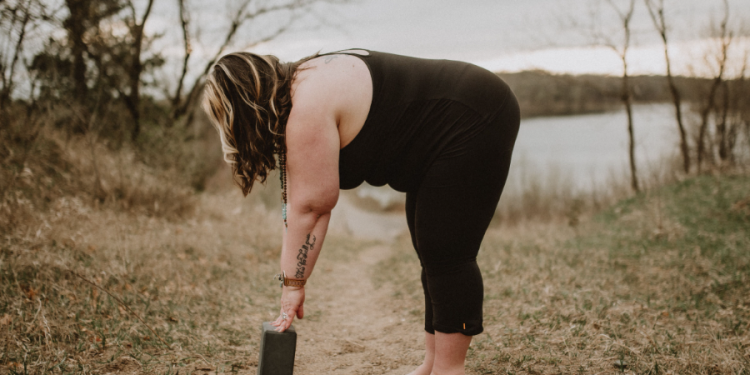by Amy Zellmer, Editor-in-chief
Yoga is a powerful tool for recovery after brain injury. Contrary to some beliefs, everyone can do yoga — you don’t need to be super flexible, be able to balance, or even be able to stand up. The beauty of yoga is every pose can be modified to accommodate anyone.
An important aspect of yoga is your breath. Connecting your breath to your body and getting oxygen flowing to your brain makes yoga powerful for recovery. Yoga also quiets the mind, letting anxiety and distracting thoughts drift away.
Standing Forward Fold (Uttanasana) helps stretch the hamstrings, calves, and hips. It helps calm the brain and central nervous system, relieving stress and anxiety. It also stimulates the liver and kidneys.
Contrary to popular belief, it is not about touching the floor or your toes. To keep your back safe in the pose you should only forward fold as far as you can while keeping your back straight. Once the upper or lower back begins to curve, you have reached your maximum stretch.
Instructions:
- Begin in Mountain pose with your feet on the floor and your hands at your sides.
- As you inhale, raise your arms overhead.
- On your exhale, slightly bend your knees and fold forward from the hips – not your lower back.
- Take several breaths, keeping your neck neutral and your shoulders pulled back and down away from your neck.
- On an inhale, slightly bend your knees as you use your legs to gently lift you back up, leading with your chest, not your lower back.
Modifications:
- Use a block on any height to rest your hands while keeping your back straight.
- If doing chair yoga, follow the above steps but widen your legs to make room for your body to forward fold.
Join me for monthly yoga classes via zoom for only $10 a month: www.patreon.com/amyzellmer











